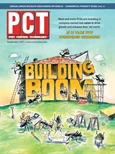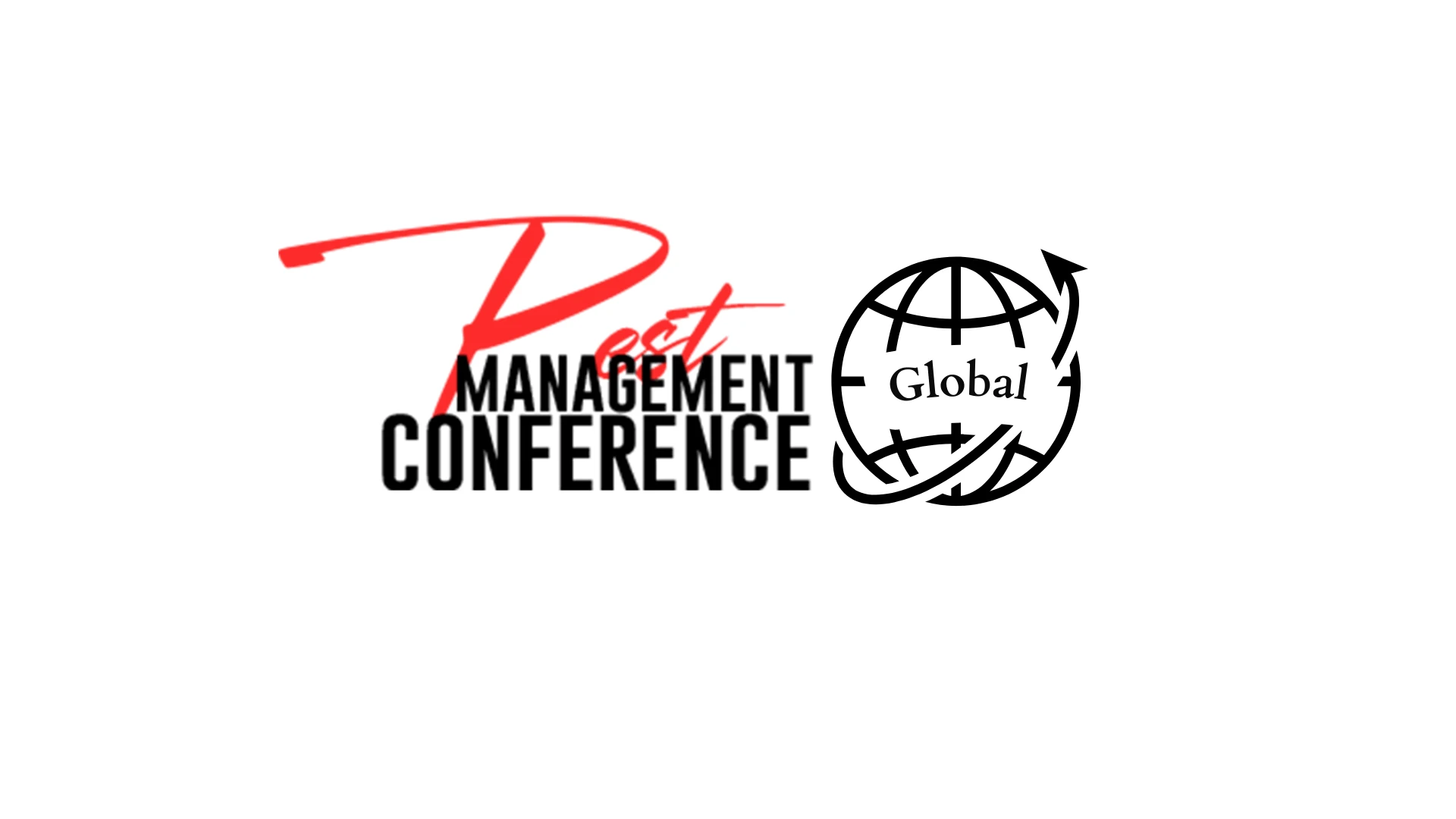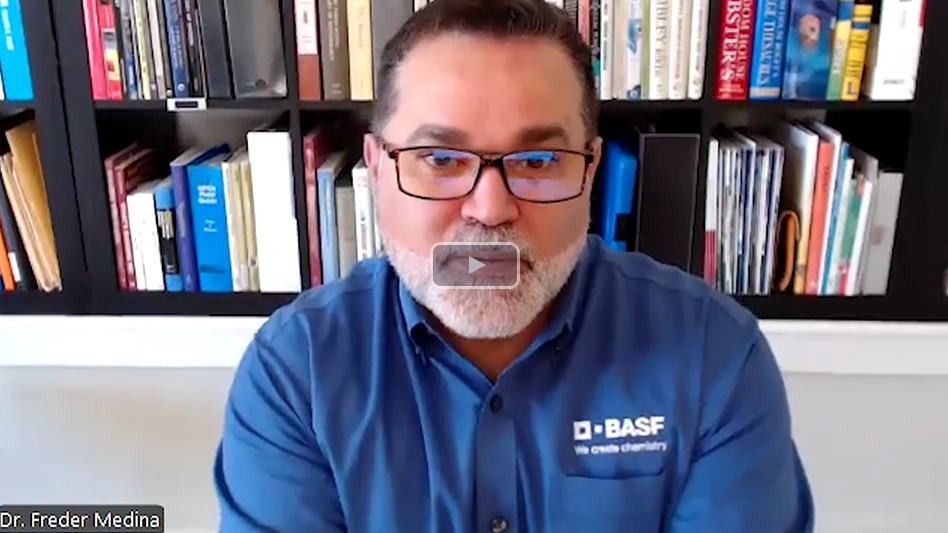When you’re running an $87 million business that has more than 1,200 employees in three states, you need a game plan.
That’s a fact of life taken seriously by Jim Aycock, president and chief executive officer of Cook’s Pest Control, headquartered in Decatur, Ala. Aycock, the financial guru who runs Cook’s Pest Control, has developed a budgeting system that bases much of its effectiveness on securing the commitment of each employee.
Aycock shared some of his budgeting secrets at the National Pest Management Association’s series of meetings “Good to Great: Built to Last,” held in December in Sunny Isles, Fla., and sponsored by Bayer Environmental Science.
EMPLOYEES’ COMMITMENT. For budgets to be truly effective, Aycock said, they need to be important to everyone, not just managers and supervisors. Furthermore, all employees, from salespeople to technicians to office staffers, must feel some ownership in the budgeting process. “They need to have input,” Aycock said. “They need to feel that it’s their budget and not management’s budget.” One way to do that is to meet with each employee and work with them to arrive at realistic but still aggressive forecasts for such things as sales figures, expenses and route stops.
Aycock promotes securing commitment from every employee regarding such things as how much business they can be counted on to bring in, or how much they think they can help save in expenses during the coming year.
The key here, Aycock said, is breaking expenses and revenues down into small “bites” of information that employees are more likely to remember and work toward. For example, it may be showing a salesperson what he or she sold in the last few years, then asking, “What can we count on from you this year?”
With technicians, it may be showing them how many stops they had last year, and then asking, “What do you think you could do this year?” In addition, technicians might be encouraged to improve on those numbers, say by adding one stop a day, or 20 extra stops per month.
And office personnel might be asked for their ideas on saving money for such things as office supplies. Then, take it a step further by asking if they might be able to cut those costs by 10 percent. Aycock said, in many cases, all it takes is a simple request for help, and you’re likely to receive a number of creative, effective strategies.
Another key to the process is explaining how the extra effort will benefit them. Twenty extra stops per month might also mean 10 percent more commission for technicians. A 10 percent reduction in office supply costs might also lead to a larger 401(k) match. Aycock said there does need to be some kind of reward associated with reaching the budget. “They need to see that they’re part of the team and that their input is important,” he said.
Asking if employees can and will achieve these goals is part and parcel to Aycock’s budgeting process. “It’s helping employees to come to a decision that’s good for them and good for the company,” Aycock said. “That way they feel they had input.
“If I’m coming up with the budget then it’s my budget,” Aycock said. “If they contribute, then it’s our budget.” And he said, “I’m only one person in 1,200 employees. “But if I can get everybody on board by contributing their thoughts and ideas to a budget,” he said, “then it’s 1,200 employees’ budget.” The goal is coming up with a budget that employees feel they contributed to.
A key to making the budget something to aspire to for employees is having their goals broken down into monthly, weekly or even daily figures that are much easier to work toward and track than annual figures. Employees also need to receive periodic updates on how they are doing compared to other employees, offices and prior years.
CHART YOUR ACCOUNTS. Two other key components make Aycock’s budget work: the chart of accounts and scorecards. The chart of accounts is a highly organized and customized breakdown of costs and revenues. The scorecard lets everyone compare ratios of costs to revenues. These two reports work together to provide information everyone needs on how the company is doing and why.
The chart of accounts, which organizes costs and income in terms of managers’ information needs, is crucial to Aycock’s system. “We’re very careful that we expense everything and that we put it in the right category,” he said. With the chart of accounts, managers identify what’s important to them. “Any significant income item or significant expense item needs to be in an expense or income category by itself,” Aycock said.
At Cook’s, the chart of accounts separates and breaks out salaries under such categories as sales, pest control technicians, termite technicians, supervisors and office staff. Each category is given its own coded, four-digit number. Expenses such as cell phone costs are now broken out separately. “I don’t want it mixed in with our land line telephone cost,” he said.
Revenues are tracked accordingly, with pest control services being further broken down into such subcategories as monthly residential service, initial monthly residential charges, monthly commercial service, and quarterly residential service. Wood-destroying insect services are broken down into several subdivisions, including residential liquid, commercial liquid, residential baiting, residential renewals and residential preconstruction service. This helps show where the company is growing.
These charts are then compared with several years of data to look for trends and problem areas, allowing you to target which lines may be problematic. Aycock noted that if you’ve got a good chart of accounts, “you can put your finger right on the problem or right on the reason for the success.”
That means managers need to know pest control income right along with how much it cost the company to produce that pest control income, in terms of salaries. The only way to do that, he said, is by having pest control income broken out separately and knowing what percent of total revenue came from pest control.
In terms of costs, Aycock said, if you want to analyze your technician costs across the company, then you have to have technician salary costs separated from other salary costs. And you also have to have technician income separated from your other revenue. “You cannot have the pest control revenue mixed in with the termite revenue,” he said, “if you’re going to try to analyze pest control salary.”
Managers need to determine what financial information they require to manage the company. “You can break it down just as far as you want to,” said Aycock, “but the key is having a good chart of accounts.”
KEEP SCORE. Information from the chart of accounts is then used on Cook’s “scorecard,” a system for providing ratios of the tracked expenses to the tracked revenues, on a year-to-year basis, for each office. Offices are ranked, and figures from previous years may also be included for comparison purposes. These scorecards are shared with all employees regularly, to track their progress and also point out trouble spots.
For instance, at Cook’s, pest control technicians are paid a commission equal to 30 percent of what they produce. To track that, the scorecard shows the actual ratio of pest control technician salaries to pest control income, year to date. If the scorecard indicates pest control salaries are making up more like 33 percent of revenues, managers will want to know why. A careful observation of the chart of accounts might then indicate the blip is simply due to training costs: say a technician in training spent the month riding with another technician.
Aycock also tracks each new revenue stream from his chart of accounts. For instance, one new area being watched is termite customers that are converted from liquid to bait. “I want to be able to watch that and see how well we’re doing with it,” said Aycock. “And I’ll also want to break out the costs associated with that to see what it’s costing us to do that.” Aycock said the ratio of costs to revenues can be compared with the ratios for other lines of business to see if it’s a revenue stream worth continuing. For instance, if other business segments usually have a ratio of less than 40 percent costs to revenues and the new area is more like 70 percent, you might think twice about continuing it.
Without a well-designed chart of accounts used in a scorecard, Aycock said, managers won’t be able to see what’s going on. “If something’s out of line, you want to know why,” he said. “You may look at it and say that’s okay, but at least you need to know that it’s okay. And the only way you can tell that is by breaking it down and analyzing it.”
Cook’s also uses monthly or even weekly scorecards to track how each office is doing on all budget items being tracked, year to date. Each office can see how it ranks compared to all other offices, and how it is doing compared to prior years. “Everything that’s on a scorecard, we have the capability to look at it branch-to-branch and year-to-year,” Aycock said.
Aycock said analyzing multiple branches can be advantageous, but only if the expense items are in percentages. “You cannot compare a 10-million-dollar branch to a half-million-dollar branch by looking at the dollars,” Aycock said. “But you can by looking at the percentages.”
As you might guess, making the budgeting process a success also depends greatly on how the process is managed. Besides involving them at the beginning, employees must also be kept apprised of how they and the company are doing at every step of the way.
“I think you just have to be a good communicator, Aycock said. “It’s critical that they feel a part of the budget process.”
Aycock said managers should also be willing to adjust the budgetary goals if circumstances beyond employees’ control arise, that will make the previously set budget unrealistic. Say, if a major account closes and it will be difficult to make up the lost revenue.
If such circumstances arise, Aycock pointed out, it’s important to tell all employees how the budget will be adjusted to accommodate for that. “Otherwise, the people just give up on everything,” Aycock said. Furthermore, employees should know they will still be rewarded if they keep up their end of the deal.
Good management can ensure that the budget is reasonable while still being something to strive for. Above all, Aycock said, “Don’t ever send the message that the budget is not important,” he said. “It is crucial in running a successful business.”
The author is a frequent contributor to PCT magazine.
Current-day Cook’s Molded by Longtime Leader
In its history of nearly 80 years Cook’s Pest Control has become recognized as a quality service provider, outstanding employer and model corporate citizen. The Decatur, Ala.-based company is a direct reflection of its longtime, second-generation leader and current Chairman of the Board Emeritus John R. Cook, Sr., whose high morals and virtues, strong work ethic and commitment to innovation have laid the foundation for current-day Cook’s Pest Control.
For Cook, running a business has been as much about doing the right things as it has been about turning profits. Take for example, the circumstances that led him into the business. In 1950, the newly married Cook was set to graduate from the Georgia Institute of Technology and pursue his dream of becoming an architect. Two months prior to graduation, however, his father and Cook’s Pest Control founder John L. Cook, passed away. “My mother was left to run the business, which included looking after 5-year termite guarantees, so I felt it was my responsibility to move back (to Decatur) and help fulfill those commitments,” Cook said.
But Cook did not totally give up his dream of becoming an architect, running Cook’s Pest Control from his home during the day and teaching a mechanical drafting class at a local trade school at night. “My training as an architect taught me to dream a little. I’m a dreamer and a planner and a goal setter,” Cook said. In fact, Cook provides his architectural input anytime Cook’s Pest Control builds a new office. Throughout his career Cook has relied heavily on the support of wife Eleanor “Jo” Cook, who kept the books in the early days and served as secretary-treasurer. Jo Cook also has an eye for decorating and has helped design the interior of Cook’s Pest Control offices. For many years she also wrote the company newsletter and served as curator of the Cook’s Natural Science Museum (see related story, below).
While the Cook’s Pest Control business that he took over was small in size, it had a solid community-wide reputation, which “kept the phones ringing,” said Cook, who also recognized the need for termite and general pest control services and opportunities provided by the post-World War II economic boom. After Cook took over the company, which originally was named North Alabama Termite Control, he soon moved into a downtown Decatur office building that he shared with another tenant. Additional growth would follow after Cook opened an office in Huntsville, the largest city in North Alabama. By 1958, the company had four offices.
Early on, Cook recognized the link between quality customer service and well-trained employees. After attending the Purdue Pest Control Conference in 1955, Cook decided that he and his employees needed to be better versed in entomology, so he purchased the Truman’s Scientific Guide to Pest Control Operations, bought a reel-to-reel tape player and recorded 19 lessons from that book. These lessons were then used at each of the company’s four offices to educate employees, who would spend five consecutive days listening to the tapes. This type of training commitment was rare at the time in the pest control industry, said colleague Norm Ehmann, retired vice president of Van Waters & Rogers (now Univar). “John certainly brought pest control into a professional era in areas of the country he operated. He also worked very hard on NPCA (now NPMA) and other associations where he was a fine leader. He was a quiet leader. Instead of preaching loudly to people he led them by example.”
Terminix’s Norman Goldenberg, who became acquainted with Cook first while serving on NPCA committees, and later was a guest at Cook’s Decatur headquarters, also admires Cook’s management style. “He’s one of the greatest people I’ve known in my life for being a person of the highest caliber ethics,” Goldenberg said. “He runs his life and his business with total organization and discipline. His sincerity to his internal family and his external family (his employees) is demonstrated in the success that he’s had all these years. He’s one of the great assets in this industry.”
In addition to giving employees tools to be successful, Cook has long understood the importance of supporting employees both at work and in their personal lives. “My goal has always been to add another truck, because I realized that what I was doing was providing an income for another family,” he said. “As we grow and hire employees I like to think of them as additions to the family.”
These qualities have earned Cook the respect of many industry colleagues, including Orkin President and COO Glen Rollins, who considers Cook a role model in business and in life. “I think John is motivated by doing good in the world,” Rollins said. “He’s pleased when coworkers and families thrive and he’s pleased knowing customers are getting fantastic service. That’s really what motivates him. He realizes if you do that, then the rest will fall into place.”
The payoff for Cook has been long-tenured employees, including many that have risen through the ranks to create a stable, talented management team that includes son and Chairman of the Board John Cook, Jr. (30 years with the company); President and CEO Jim Aycock (35 years); Vice President Personnel George White (37 years); Vice President Sales and Service Joey Harris (23 years; 4 with Hill-Smith P.C.). Together this group has driven the company to continued success. In 2006 Cook’s generated revenues in excess of $86 million, operating 32 offices, and employing more than 1,200 people. Cook said the company’s goal is to hit the $100 million mark in revenues.
While Cook has passed on most of the company’s leadership to this next generation of management, he still remains active in the business and interested in the pest control industry. “I don’t know of another business where customers put as much confidence in us. When we are servicing for pests, customers give us access to their homes and we can’t lose that trust. Some professions protect health and some protect property. Our people need to be proud of the fact they protect both.”
Today, Cook is looking forward to continuing his life’s journey. In November 2006, he was diagnosed with pancreatic cancer and underwent successful surgery at the Mayo Clinic in Rochester, Minn. He has been receiving chemotherapy and radiation treatments both at the Mayo Clinic and at home, and his recovery has been going well. “I just know that God has something else in store for me today,” he said. — Brad Harbison
Cook’s Natural Science Museum
One of the keys to Cook’s Pest Control’s success has been the company’s ability to develop deep-rooted customer relationships. Cook’s is actively involved in the communities it services and has many second- and third-generation customers. Perhaps the company’s most successful PR tool has been the Cook’s Natural Science Museum.
The museum began with a few “bug collections” in the 1960s and it has grown to include over a hundred exhibits of mounted birds and animals, sea shells, coral, rocks, minerals, and yes, insects. In 1968, a 1,200-square-foot portion of Cook’s warehouse complex was devoted to housing the collections, which by then included mounted birds and animals. Teachers, students and civic groups were encouraged to request a tour.
In 1980, a 5,000-square-foot building, located at 412 13th Street, S.E., Decatur, Ala., was constructed to house the ever-expanding collections. At this time, Cook’s hired personnel to operate the museum and keep it open seven days a week at no charge. The museum’s doors were opened to the public in 1980 and it receives more than 20,000 visits each year. To learn more visit www.cookspest.com/museum.html.

Explore the September 2007 Issue
Check out more from this issue and find your next story to read.
Latest from Pest Control Technology
- Moneypenny is a Provider of Virtual Receptionists
- Video: Top 10 PCT Photo Contest Finalists
- Massey Services Expands with Southeast Commercial Region
- Pest Management Foundation Announces Kevin J. Burns Scholarship
- How to Identify Clover Mites
- Termite Threat Halted in Southern Florida
- PCT Media Group Adds Managing Editor Katie Hobbins
- Evens Clerjuste on Team Communication as Company Growth Point





